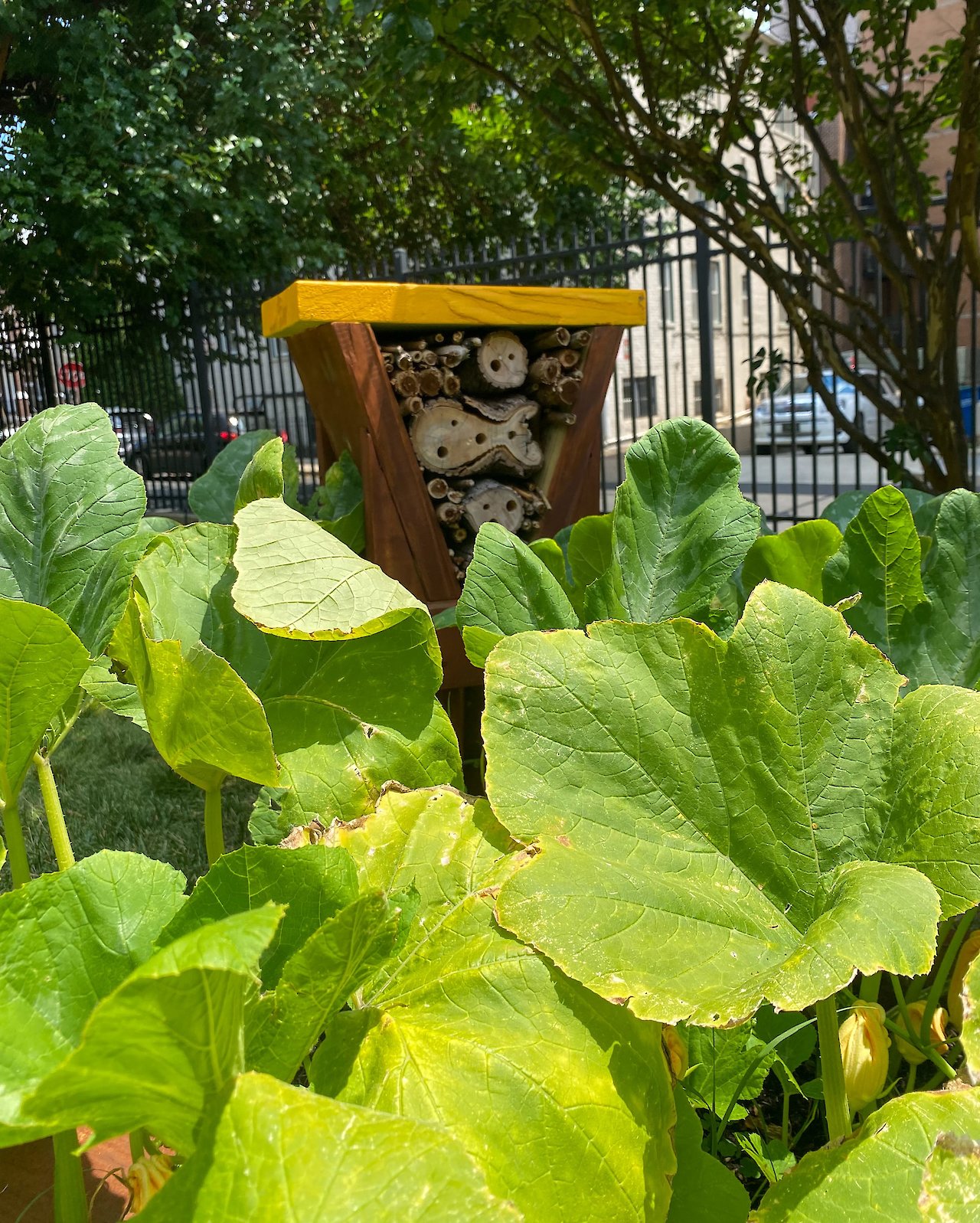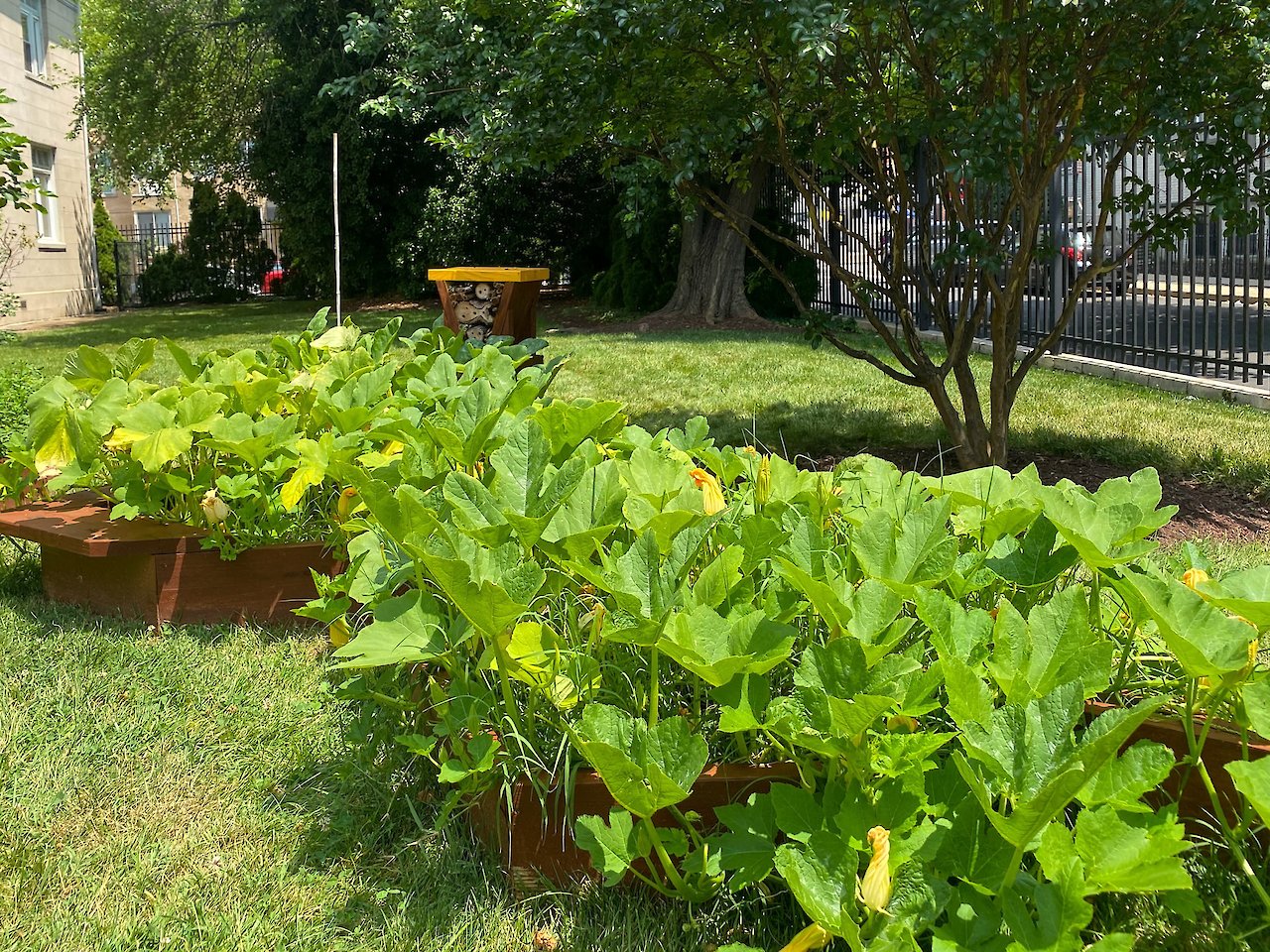Pumpkin (jack o'lantern)
Seed Mix: None
Cucurbita pepo var pepo
The Pumpkin, like the Cosmos Flower, is not native to the eastern United States. It is a cultigen, a species of plant bred and cultivated for specific characteristics, and was brought to the coast from the arid western states where its ancestors grew wild. A food source for Indigenous people of the continent, pumpkin seeds traveled well and therefore found their way across the continent. This 10,000+ year history challenges our concept of what a native plant is.
The Pumpkin is in the cucumber family and has large and funnel-shaped flowers. Typically opening once, the pollination of the flower is an urgent affair. To further complicate matters, the flowers are “incomplete” meaning that there are male and there are female flowers. This requires two separate flowers to bloom on the same morning. Luckily these flowers are favorites for many insects and can often be found to have a bee or two buzzing about, dressed in pollen.
Solitary bee shelter
Hollow tree trunks provide an ideal refuge for pollinators such as solitary bees, as they provide the right temperature and comfort for pollinators to lay their eggs on a mixture of pollen, saliva and nectar that will serve as food when the eggs hatch. After laying the egg, a bee builds a partition separating each egg and provides them with food. It then repeats this process until the nest is filled with eggs and pollen. When it is finished, it seals the entrance with clay and saliva. These insects have a very short life cycle and, although they have a stinger, they show no defensive behavior, unlike domestic bees, so they are completely harmless if left undisturbed.
Further resources

